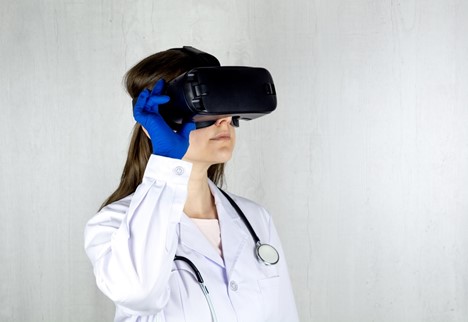
Telehealth or telemedicine refers to the various ways healthcare professionals can provide their services to people through telecommunication and other technologies. With regards to pain treatment, perhaps the most impressive application of telehealth right now is the use of virtual reality (VR) to distract burn patients when they are having their wounds cleaned as well as during physical therapy.
“Their pain scores would be reduced somewhere between 20-40 percent when you add virtual reality onto their background pain medication,” details Dr. Sam Sharar of the University of Washington. “Interestingly, these patients reported a consistent magnitude of that pain reduction after using VR three to four times.”
By distracting patients with synchronized and responsive virtual landscapes filled with slow-moving rivers, dark starry skies, or snowy mountains, VR has proven to be an effective digital method for treating pain. After seeing how effective VR can be for acute pain, researchers are now exploring how it can be used for chronic pain treatment methods.

Image credit: Unsplash
The use of emerging and cutting edge technology is just the tip of the iceberg when it comes to telehealth. Given the widespread availability of high-speed internet, much of today’s telehealth is being distributed via computers and smartphones. In fact, due to global physical distancing restrictions, experts estimate that 95% of patients seeing pain medicine specialists before the pandemic have continued to do so with help from telehealth options.
While clinics and hospitals have very limited slots for in-person visits, telehealth is bridging the gap through electronic medical records and digital communication tools that encrypt messages for medical privacy. “The anxiety and isolation caused by COVID-19 adds to chronic pain, which is further compounded by reduced access to strategies, such as physical therapy, exercise and even visits with the grandkids or other loved ones, that help people manage their discomfort,” explains pain medicine specialist Dr. David Dickerson. “Physician anesthesiologists who specialize in pain medicine have gotten creative to ensure their patients have access to the safest and most effective care.”
In short, telehealth is not just effective for treating chronic pain, but it is also increasingly becoming more popular amid physical distancing protocols. And given how effective utilizing digital space can be for medical treatment, it’s no surprise that healthcare educators are also looking online to continue teaching future healthcare professionals. Apart from triggering an urgent demand for 11 million additional nurses in the U.S., the global health crisis has forced many industries – among them healthcare and education – to further explore communication and instruction online.
“We are really striving to educate our students on what is currently happening in health care and to evolve and change as needed,” explains Missouri Western State University nursing department chair Jacklyn Gentry. In order to continue teaching classes, Missouri Western State University’s nursing program is having to adapt its schedule. They have had to mix up limited physical classes with online classes to adapt to the current climate. In higher education, online classes are nothing new. Maryville University’s master of science in nursing online program demonstrates how all of the advanced nurse practitioner concentrations, as accredited by the Commission on Collegiate Nursing Education, can be taken 100% online. These concentrations include both acute and primary care for adult-gerontology, family and pediatric care, and psychiatric nursing. In short, America’s future nurses are more than ready to adopt telehealth methods that can lessen the impact of the impending healthcare shortage.
Whether for pain or any other medical concern, telehealth is here to stay. And with both the educational and professional sectors of the healthcare industry at the forefront of this digital transformation, telehealth and telemedicine can only get better.
Article written by: Luna Bella
Exclusively for paulchristomd.com
